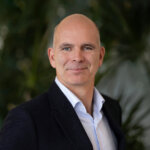Inclusion in Norwegian Higher Education: Deaf Students’ Experiences with Lecturers
Nordic research concerning disabled higher education students has suggested that inclusion often simply means placement among non-disabled peers. Individual disabled students are the ones who must bridge the gap between which accommodations are offered and what their felt needs are. The study presented in this article is based on semi-structured qualitative interviews with five deaf Norwegian master’s degree students. Teachers’ knowledge regarding visually oriented instruction and intercultural communication was central to the students’ perceived inclusion.
The informants largely saw themselves as responsible for academic inclusion and would make demands for adjustments only when all other options were exhausted. Achieving results was given such priority and demanded so much effort that little energy was left for social activities and interaction with hearing peers. This article discusses the lack of experienced inclusion understood as a collective practice encompassing both academic and social aspects. Deaf students’ own experiences are resources for improvement that remain untapped by Norwegian universities.
